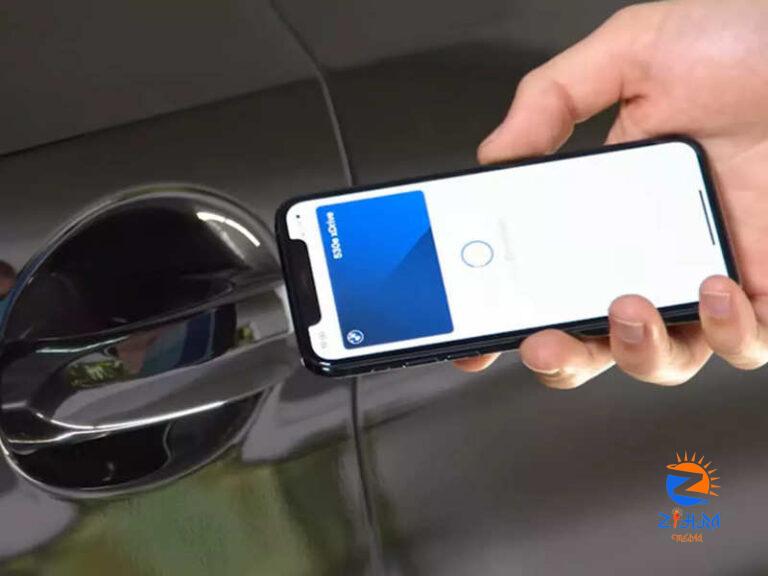
[ad_1]

Ultra-Wideband or UWB wireless technology is a short-range wireless communication protocol. UWB has been gradually accepted and approved by users worldwide and now it co-exists among other commonly used standards like Wi-Fi, Bluetooth, and NFC. However, one should not confuse it with the ultra-wideband mobile network which is a different 5G mmWave technology. Here we will discuss all the details about the ultra-wideband wireless technology that you should be aware of.
What is ultra-wideband wireless technology and how is it useful?
The ultra-wideband wireless technology is used to locate items in the real world with great precision as it boasts extremely high location and directional accuracy. The UWB technology is already present in connected tracking devices like the — Samsung Galaxy SmartTag Plus and the Apple AirTag.
Moreover, carmakers including BMW, Audi, Ford and Hyundai have claimed that UWB-equipped devices can also serve as a secure digital key. Various forms of keyless entry technology exist nowadays, however, adopting UWB will also be more secure compared to other wireless standards. UWB technology will allow vehicles to measure the exact location of the key fob in real-time, within a few centimetres. On the other hand, Bluetooth 5.1 offers lower positional accuracy than UWB which is accurate only to the nearest metre. BMW mentions, “Your car will be able to recognize when you are getting closer and automatically unlock, turn on its lights, or even launch preconfigured personalized settings.”
UWB chips can also be integrated with other devices like smartphones and smartwatches. This technology will also make it convenient for car owners as they don’t have to carry around a separate key fob. Samsung is working on a Digital Key platform which will allow users to unlock the front doors of their cars using a UWB-enabled device or wearable. As NFC-based mobile payments eliminated the need to carry around physical bank cards, UWB is expected to phase out the use of physical car keys.
How does the technology work?
UWB works differently from the other wireless data transfer technologies. UWB is a pulse pattern radio-based technology that sends data in the time domain. It works with a spectrum ranging from 3.1 and 10.6 GHz. As the name suggests, the pulse method involves a lot more spectrum compared to other protocols to work reliably. A single UWB band is typically 500MHz wide, whereas a 4G LTE band ranges from 5 to 20MHz and a Wi-Fi band ranges from 20MHz to 80MHz.
The pulse data can be sent very quickly without losing accuracy due to the wide spectrum. Depending on the frequency, UWB can hit data rates starting from 4Mbps to 675Mbps or more, which is way faster than NFC’s 424Kbps and Bluetooth’s standard 2.1Mbps speeds. However, Wi-Fi 6 achieves higher speeds of 2Gbps speeds.
To avoid interference with each other, wireless technologies are usually restricted to very narrow bands. UWB operates at very low power levels that fall within the noise floor of other wireless applications which helps this technology to avoid the problem of interference. To sum up, the wide spectrum allows UWB to be easily detectable while its low power doesn’t interfere with other signals.
Another advantage of using this pulse-based transfer is that it can be used to calculate time-of-flight information from the received data. The distance between the transmitter and receiver can be worked out once the time taken for the signal to bounce back and the speed of the data transfer is known. It even nullifies the risk of relay attacks which is a common trick used by car thieves. This trick involves intercepting and rebroadcasting radio signals to unlock a vehicle.
Difference between UWB, NFC and Bluetooth
Bluetooth offers a decent range for indoor use as it operates in the 2.4GHz band, but it is still susceptible to interference as it uses the same spectrum as some WiFi signals. UWB was adopted for industrial applications as its wide spectrum is much less prone to interference, but it doesn’t have a long-range like Bluetooth. On the contrary, NFC operates at 13.56MHz and most implementations need physical proximity for data transfer, while UWB transmission distance lies somewhere between Bluetooth and NFC.
Both Bluetooth and NFC are comparatively inexpensive to implement for low-power beacons or passive-powered NFC tags, whereas UWB is more costly and needs an active power source. UWB will be advantageous when the key requirements include — high-speed data transfers, fast location detection with high accuracy and low risk of interference.
Devices that support ultra-wideband wireless technology
UWB has been available for a few years now, however, it is not as common as Wi-Fi or Bluetooth yet. The UWB technology is restricted to some of the most expensive devices that are available on the market. But this can change as the technology gets adopted into mainstream vehicles and tracking devices. Some of the smartphones and wearable devices that support the UWB technology include — all models of Apple iPhone 11, 12 and 13 series, Samsung Galaxy Note 20 Ultra, Google Pixel 6 Pro, Samsung Galaxy S21 Plus/Ultra and S22 Plus/Ultra, Samsung Galaxy Z Fold 2 and Z Fold 3 along with Apple Watch Series 6 and Series 7. More manufacturers are expected to include UWB support in their upcoming flagship generations, however, mid-tier and affordable devices are still a long way from getting this technology anytime soon.
FacebookTwitterLinkedin
[ad_2]